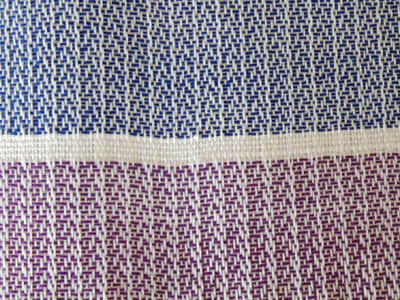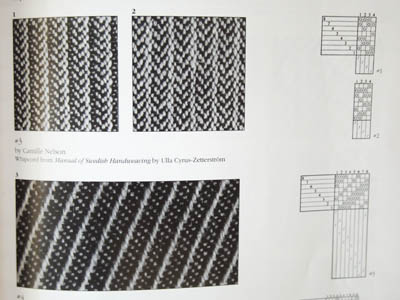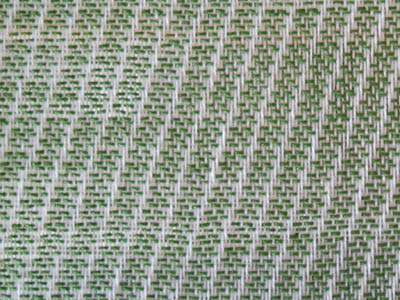It didn’t take long to get the Katie loom warped up for my first twill sampler. I put 5 metres on, 10 inches wide, in 8/2 cotton. And I have to say… I need to find a cheaper yarn for sampling! I used 1/2 to 2/3 of a nearly $40 cone just for the warp. Since the weft usually takes a bit less than the same amount for the warp, that’ll make this sampler cost up to $60.
I decided to use a rainbow of colours for the weft. If it can be pretty, then why not? I wove 10 cm of the first straight twill in the book, then moved on to the next one. A few picks in I compared what I had to the photo in the book and realised it wasn’t looking right.
And neither did the first pattern. It was vertically reversed, as if I had set a mirror horizontally to the pattern photo.


What had gone wrong? Kay had confirmed at the workshop that you follow the treadling section of a draft beginning at the tie-up box and working out. I had done that. The heddles were threaded in exactly the same sequence as the draft indicated – with 1 at the front, 2 next up and to the left, and so forth until 8 was at the back on the left. Going back to the basics, I looked at Learning to Weave and it confirmed that I should follow the treadling from the tie-up box downward. So what was going wrong?
Did the tie-up indicate a sinking shed? No, the boxes were marked with ‘o’. Was the photo of the fabric upside down? No, if it had been then the stitches would angle to the right of the ridges. I was getting a flipped pattern, not a rotated one.
After a break and a think, I had another look at the book’s first section. It said that the treadling in a draft didn’t always start at the tie-up box. Sometimes it started at the bottom and worked toward the tie-up. However, it also seemed to say that it would only happen if I’d threaded the opposite way to the draft – slanting up and to the right.
This was one of those moments I wished I had a more experienced weaver on hand to ask stupid questions of. But I didn’t, so I decided that I’d prefer to weave samples that looked like the photo, which meant weaving the rest of the drafts from the bottom up. Which worked fine for the third sample.

And then I moved on to the next page… and found the last draft clearly wasn’t going to produce the cloth in the photo. And I found a mistake on the next page too.
But overall I’m really enjoying sampling. By the time I’ve woven 10cm of a draft I’ve worked it out, even begun to memorise it, and it’s starting to get a bit boring – but then I get to try out the next one. It appeals to my rather short attention span. Which has me worried that by the time I get back to a big project I’ll find it harder to concentrate!
